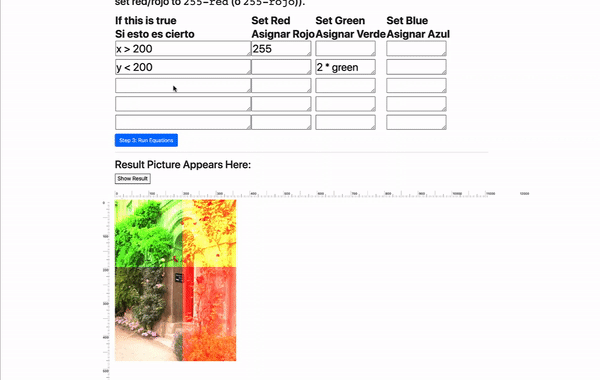Participatory Design to Support University to High School Curricular Transition/Translation in FIE 2022
June 5, 2023 at 8:00 am 1 comment
Here’s my second blog post on papers we presented during the first year of PCAS. Emma Dodoo is an Engineering Education Research PhD student working with me and co-advised with Lisa Lattuca. When she first started working with me, she wanted a project that supported STEM learning in high school. We happened upon this fascinating project which eventually led to an FIE 2022 paper (see link here).
The University of Michigan Marsal Family School of Education has a collaboration with the School at Marygrove in the Detroit Public Schools – Community District. The School at Marygrove requires all high school students to take a course in Engineering every year. The school is new, so when we came into the story, they were just starting to build an 11th grade Engineering curriculum. Where does an innovative K-12 school find curriculum for not-often-taught subjects like Engineering? It seemed natural to look to the partner university.
The University of Michigan has recently established a Robotics Department with an innovative undergraduate curriculum. The leadership in the U-M School of Education and the School at Marygrove decided to use some projects from the undergraduate curriculum for the 11th grade Engineering curriculum. Emma and I came in to run participatory design sessions to help with supporting the high school in adopting the university curriculum. We focused on one project in particular, where students would input data from a LIDAR sensor on a robot, then visualize the results. What we wanted to know was: What are the issues that come up when using a university curriculum to inform an innovative high school curriculum?
We started out with a set of interviews. We talked to undergraduates who had been in the Robotics curriculum and asked them: What was hard about the robotics projects? What were things that you wished you knew before you started? They gave us a list of issues, like the realization that equations on a plane could be used to define regions of a picture, that colors could be mapped to numbers and equations, and that pixels could be queried for their colors.
We talked to high school educators about what they wanted students to learn from the project. They were pretty worried about the mathematics required for the project, especially after the students had spent all of 10th grade on-line during the pandemic.
Emma took these objectives and concerns, and generated a set of possible activities to be used in the class. She used Desmos, Geogebra, and our new Pixel Equations teaspoon language. (I mentioned back in this blog post that we were using Pixel Equations in participatory design sessions — that’s when this study was happening.)
Pixel Equations was developed explicitly for the concerns that the undergraduates were raising and that the math educators cared about. Users specify the pixels they want to manipulate (leftmost column) by providing an equation on a plane or an equation based on the RGB channels in the color in the pixel. They specify the desired color changes in terms of the red, green, and blue channels (three columns on the right). The syntax for the boolean expressions and the equations for calculating colors is the same as what students would see in Java, C, or JavaScript. But there are no explicit loops, conditionals, or data — it’s a teaspoon language.

Emma ran participatory design sessions with stakeholders, including teachers from the School at Marygrove. Her goal was to identify the features that the stakeholders would find valuable, and in particular, to identify the concerns of the high school educators that may not be addressed in the university curriculum. She identified four sets of issues that were important to the stakeholders when transferring curriculum from the university to the high school:
- Prior Knowledge: The students knew Desmos. Using a tool they used before would help a lot when dealing with the new robotics concepts.
- Priming: The computing must be introduced so that there is time for the students to become familiar with it.
- Motivational Play: High school students need more opportunities to see the fun in an activity than undergraduate students.
- Self-efficacy: It’s important for students to feel that they can succeed at the activities.
That’s where the paper ends
All of this design and development happened during the pandemic. We didn’t hear much about what was going on in the high school, and we couldn’t visit. When we talked to our contacts at the School of Education, we found that they didn’t have much news either. It wasn’t until much later that we saw this news item. The 11th grade Engineering class actually didn’t do any of the mathematics activities that we’d helped with. Instead, the school got a grant for a bunch of robots, and the classes focused on directly programming the robots instead. It’s disappointing that they didn’t use any of the things that we worked on, but as I’ve been mentioning in this blog, we find that adoption is really hard. Other factors (like grants and the wow factor of programming a robot) can change priorities.
The paper is interesting for investigating stakeholder issues when transferring activities from university to high schools. Those are useful issues to know about, but even if you address all the issues, you still might not get adoption.
Entry filed under: Uncategorized. Tags: computing for everyone, robotics, teachers, Teaspoon.
1. A Scaffolded Approach into Programming for Arts and Humanities Majors: ITiCSE 2023 Tips and Techniques Papers | Computing Ed Research - Guzdial's Take | July 10, 2023 at 1:00 am
A Scaffolded Approach into Programming for Arts and Humanities Majors: ITiCSE 2023 Tips and Techniques Papers | Computing Ed Research - Guzdial's Take | July 10, 2023 at 1:00 am
[…] 1: The teaspoon language is Pixel Equations which I blogged about here. You can run it […]